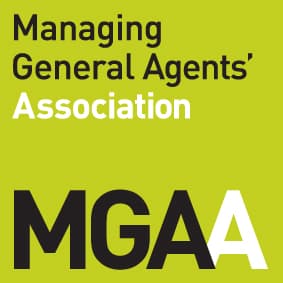
All of us know the story of the Titanic, or some of it at least; that on15th April 1912, it sank having hit an iceberg.
Perhaps what is less known is the sequence of events and poor decisions that led to the deadliest peacetime sinking of a cruise ship, resulting in the loss of 1,514 lives.
Thankfully today we are much better at identifying and mitigating against the risks that could lead to such a catastrophe. But, as we all know, not every risk is quite so easily identified. Let us take property damage for example, where we estimate the cost of restoration to be around $8 billion every year in Europe. In this article we will review some of the key events that led to the Titanic disaster and what lessons can be applied in today’s property damage world.
Why did the Titanic hit an iceberg?
Wireless officer Jack Phillips was ‘too busy’ to heed warnings from the Mesaba and the Californian, both of which reported a large number of icebergs and an ice field directly in Titanic’s path. Despite the fact that both the message and the signal were strong and loud in Phillips’s ears, he ignored the warnings, and that message was never delivered to the bridge.
So much of the focus for today’s property insurance supply chain is to deliver preventative measures that at the very least mitigate the amount of damage encountered in a property. IoT, coupled with expertise in damage management is enabling technologies that can detect leaks by feeding real-time information on water temperature, flow rate, pressure and humidity. This not only reduces the overall number of EoW claims, it also mitigates the severity of such damages, enabling drying times to be reduced and claim costs to be minimised.
The communications were ineffective.
Like so many failures in life and work, poor communications were a key component in the disaster. The failure to inform the bridge of the warnings from other ships. The failure to ensure the lookout had the keys to the binocular cupboard. The delay in ordering the change of course. All of these failings in communication combined ensured the Titanic hit the iceberg.
We know that effective communication and coordination with the entire supply chain is pivotal to ensuring projects are delivered successfully. From informing the policyholder at FNOL about the process and what they can do to help themselves, to keeping the adjuster and insurer informed about progress, risk of project creep and cost, good communication is often the difference between a manageable damage and a disaster.
The rivets popped allowing the water in and the bulkheads weren’t watertight.
Because more than three million rivets were required to build the Titanic, some were sourced from other suppliers, the result being some did not meet the necessary quality requirements. Part of the attraction of the Titanic for passengers was that it was ‘unsinkable’, due in part to the installed bulkheads. In actual fact, the bulkheads weren’t watertight at all.
It is fair to say that the property damage sector has done as much as many industries in the pursuit of technological excellence. Equipment manufacturers are in a cycle of continuous improvement to develop machines that work faster, while at the same time consuming much less energy. Technology doesn’t just end there however, there is constant development in communications portals too to ensure every stakeholder has real time access to progress on a claim. There is universal recognition that technology is only part of the answer, effective damage management still requires the skills and experience of expert technicians to return properties to pre-incident condition quickly and sustainably.
The owners prioritised promenades over lifeboats.
The Titanic had only 20 lifeboats rather than the 48 that would have been necessary to save all the people onboard. The Titanic’s owners and the British Board of Trade thought that having too many lifeboats crowded the deck and would make people believe the ship was unsafe.
A large part of our project plan is getting the priorities right. That means identifying the operations critical to securing the ongoing future of the business – whether that is servers, machinery or any other infrastructure. Often it is the business interruption that creates more damage to the business than the original incident – in terms of loss of productivity and potentially, brand reputation. These damages can take much longer to heal.
That’s why every claim has an experienced project manager, and every damage has a bespoke plan with a clear schedule of works designed to reduce cycle times, mitigate risk, and ensure projects are completed on time and to the highest standard.
Robert Hitchins turned right instead of left.
In all the panic, the right message simply didn’t get through and within two hours, the Titanic had perished.
We know where we are going and where we want to be. We continue to invest in people and technology to deliver innovative solutions to property related perils. Today, we are able to support a double-digit reduction in the volume and value of claims to enable our MGA clients to realise significant and sustainable increases in revenue.
Ensuring the unsinkable doesn’t become the unthinkable.
As we now know, the sinking of the Titanic and the historic loss of life was as a result of a catalogue of catastrophic errors in foresight, judgement and communication. This tragedy could have been avoided with bigger picture thinking and proper scenario planning.
As the European market leader in property damage restoration, we don’t deal in ‘what if’s’ or ‘maybe’s’. Our expertise and transformative technologies ensure we always see the bigger picture, communicate effectively and deliver better outcomes to protect policyholder assets and minimise BI. For life.



